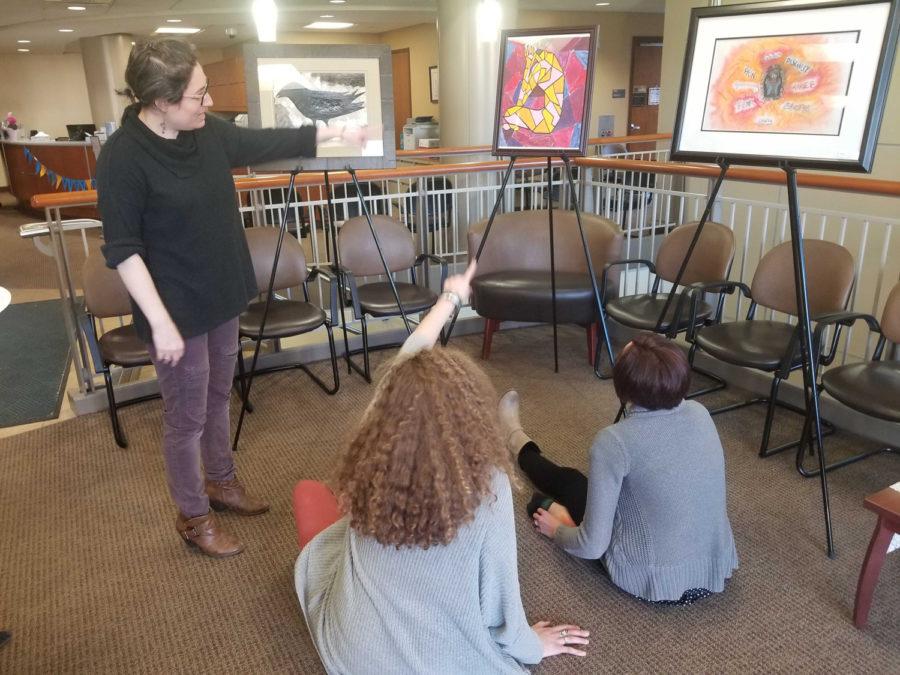Films highlight complexities of immigration
March 15, 2011
A mass of people taking to the streets to protest a bill affecting immigrants inspired director Esau Melendez to create a film about the movement. He believes that when he started the process four years ago in 2006, people didn’t realize how big this issue would become. CMU 2011 International Film Festival: Faces of Migration
Thursday through April 10
$4 per screening or the festival pass of $20 for 15 events
Tickets and passes are available online
www.cmu.edu/faces
A mass of people taking to the streets to protest a bill affecting immigrants inspired director Esau Melendez to create a film about the movement. He believes that when he started the process four years ago in 2006, people didn’t realize how big this issue would become.
“Half a million people marched in the streets to stop a bill that would criminalize the people,” he said, referring to proposed and strengthened border security,. “…This has to be the biggest movement in the history of immigrants, but I don’t think anyone saw what happened in May 2006. This movement is for people who are here contributing to society and who want to be recognized but are forced into the shadows.”
From those experiences, he came up with the idea for “Immigrant Nation! The Battle for a Dream.” The director will appear at both of the screenings of his documentary at the upcoming Carnegie Mellon University 2011 International Film Festival.
In its fifth year, the film festival will feature a number of films exploring issues related to migration, explaining what drives people to immigrate and the impact the movements have on both the countries people leave and the countries they move to.
Though its theme changes annually, the film festival always brings in award-winning films and documentaries with “artistic merit” from around the world, festival director Jolanta Lion said in an e-mail.
Every year, Lion said she looks for “independent, foreign and documentary feature-length films that have not yet premiered here in Pittsburgh and on occasion that have not premiered in the United States” that connect with the festival theme. Even students can submit through a short-film competition.
Lion has a strong history in film, teaching in Poland and then at Pitt up until 2006. Now the director of the film festival, Lion is able to “take part in the world of film” in a new way by distributing different works to the audience in a “thematic way.”
Melendez’s film has been shown in the United States at more than a dozen festivals and has won several awards. The film, which was the director’s first work in the genre, has a potential national release planned for September of this year.
He described the story as “action-driven” rather than debate- or opinion-driven, using the stories and voices of people involved in the movements to tell a larger story. For Melendez, the film isn’t just about the people he followed. Instead, it’s about a massive rights movement among the immigrants.
“It’s about the story of these people, who may be activists or regular citizens, who are fighting for the rights of the immigrants,” he said. “So the entire documentary references that struggle. And there’s no voice-over — it’s told entirely by people involved.”
Melendez spent the film-making process networking and meeting people he could follow to tell the story about immigrants and their rights in the United States. After following his subjects for a year and a half, he took time to carefully put the film together.
“It was difficult to get it done,” Melendez, who spent four years on the 96-minute film, said. “In the beginning, I began in the recession, and it was so hard to get money for this.”
On the other hand, while Melendez spent years on his project, Mike Ott spent only a month creating his 84-minute film, and less than half a year editing it.
A man who “stumbled” into filmmaking with no clue about what he wanted to do with his life after college, Ott created “Littlerock,” a fictional film about two Japanese tourists stranded in Littlerock, Calif. One of the characters falls in love and moves in with a local, making herself at home in the area. The entire film revolves around the characters finding ways to communicate without speaking the same language and dealing with prejudice against foreigners.
“The initial idea came from traveling abroad and being in situations where everyone spoke a different language than me,” Ott said in an e-mail. “It started making me think about how daunting it must be when people come to America and don’t know the language, and how hard it must be to try and assimilate.”
Ott, however, says the film is about much more than assimilation.
“I think it’s about a lot of things,” he said. “It’s about how language connects us as well as divides us, it’s about the American dream versus the American reality, it’s about examining America through a foreigner’s eyes.”
Ott also said that the film could be about “young people finding their way,” making it accessible to students attending the film festival.


